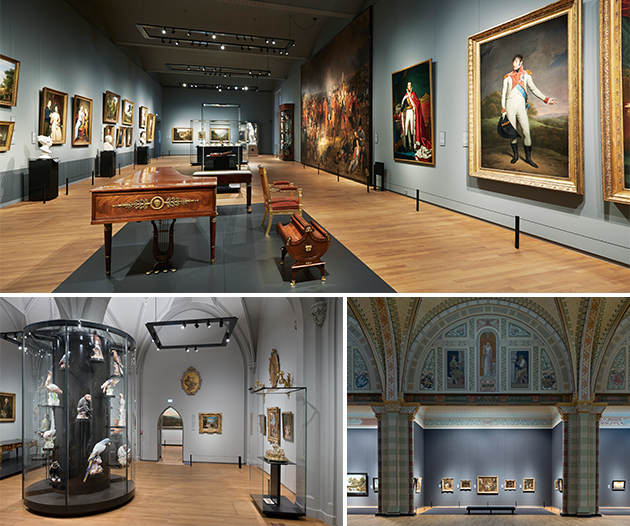
Following an extensive and highly anticipated refurbishment that took 10 years, the Rijksmuseum, Amsterdam’s national museum, reopened on April 13.
What has changed inside architect Pierre Cuypers’ building from 1885? Almost everything. Two entire floors have been removed to create a vast, airy atrium, and a cycling path cuts through the middle of the museum with a tunnel dug under it that connects the east and west wings for the first time. Gone are the poky galleries that were added over the years, the colored walls and stuffy drapes. Now, the magnificent collection is allowed to shine against a neutral charcoal-gray background illuminated by almost 4,000 LED lights.
The exhibits have been radically reorganized, too. Previously displayed according to media, more than 8,000 objects are now presented side-by-side in chronological order, charting 800 years of Dutch history from the Middle Ages to the 20th century.
The altarpiece of the collection remains Rembrandt’s Night Watch, which hangs at the head of the cathedral-like Gallery of Honour. You’ll need to visit early to avoid the snap-happy crowds (the museum is open daily from 9 a.m. to 5 p.m.), but the monumental painting alone is worth the effort. Or, for a close-up of the masterpiece that most visitors overlook, admire the small copy to the right of the original. Attributed to Gerrit Lundens, it shows Night Watch’s initial and much larger composition.
It is easy to lose yourself in the majesty of the Gallery of Honor, where works by Johannes Vermeer, Jan Steen and Frans Hals compete with the intricately decorated and painstakingly restored pillars and ceilings for attention. But tear yourself away from the Old Masters, and you’ll discover three further floors of artistic treasures, from religious icons and delftware, to Rietveld chairs and even a World War I biplane.
Photos Courtesy of Rijksmuseum

